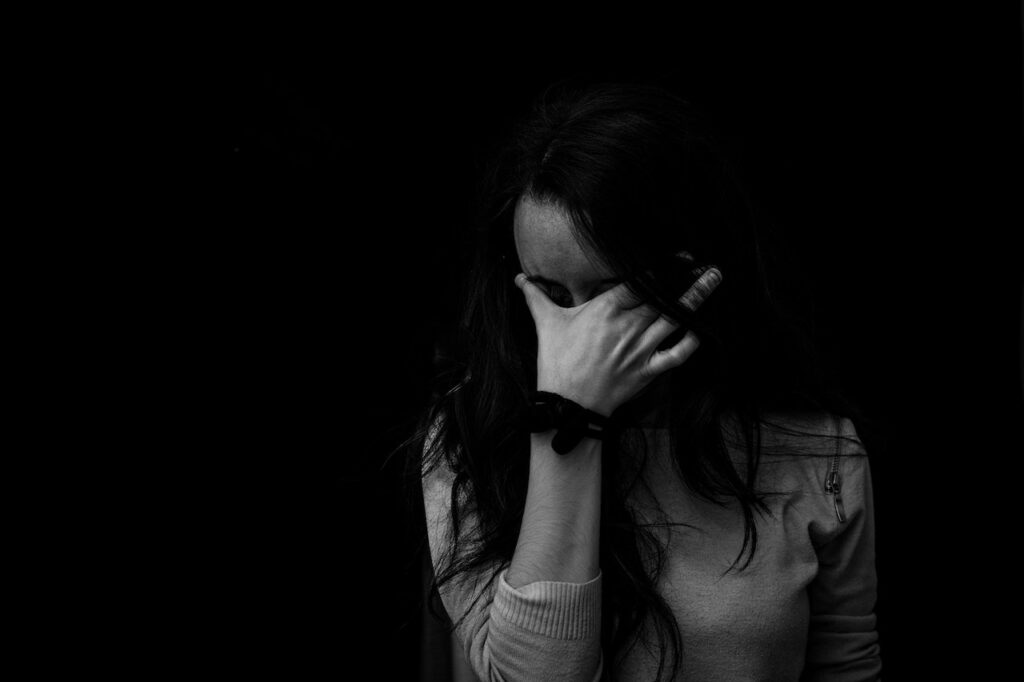
La primera llamada de atención para Leonor, abuela de «Itzi», una jovencita de 13 años a quien tiene a su cuidado, fue el que su nieta tenía actitudes que normalmente no tenía antes, se alejaba de todos, no quería comer, dejó de querer ir a sus actividades extra escolares y finalmente descubrió que se auto infringía cortes en sus brazos. Pensó que era la edad y lo dejó pasar, dos meses después tuvo que correr a la sala de emergencias con su nieta luego de que esta ingiriera una gran cantidad de medicamentos que puso en peligro su vida.
Itzi, como cariñosamente le dice su abuela, corrió con suerte y no murió, pero hoy Leonor se culpa de no haber puesto más atención y de pasar por alto las señales.
El suicidio es un grave problema de salud pública en todos los grupos de edad. Entre los jóvenes, cobra un precio enorme debido a los años significativos de vida potencial perdidos. Tan solo en 2020, el suicidio fue la segunda causa principal de muerte entre las personas de 10 a 24 años y de 25 a 34 años.
Así lo informa la organización America’s Health Rankings, quien precisa que, además de los que mueren por suicidio, hay muchos más adolescentes que tienen pensamientos suicidas o intentan suicidarse y sobreviven.
La ideación suicida, el intento y la consumación de los jóvenes están en aumento. Los resultados del Sistema de Vigilancia de Factores de Riesgo del Comportamiento Juvenil de 2019 muestran que 18.8 por ciento de los estudiantes de secundaria consideraron seriamente intentar suicidarse, mientras que 8.9 por ciento realmente lo intentó.
La organización estimó que el costo del suicidio en Estados Unidos en 2019 fue de 926 mil millones de dólares en costos médicos, pérdida de productividad y valor de la vida estadística.
Las estadísticas señalan que la tasa de suicidio adolescente es más alta entre los varones comparados con mujeres. Sin embargo, las mujeres intentan suicidarse con más frecuencia que los hombres.
Los adolescentes indios americanos/nativos de Alaska en comparación con otros grupos raciales y étnicos, son los que mayor índice de suicidios tienen, a ellos les siguen los adolescentes blancos y luego los pertenecientes a las comunidades asiáticas, isleños del Pacífico, hispanos y afrodescendientes.
Los números muestran que los intentos de suicidio son más altos entre los estudiantes que se identifican como homosexuales, lesbianas o bisexuales en comparación con los estudiantes que se identifican como heterosexuales.
Healthy People 2030, perteneciente a la Oficina de Prevención d Enfermedades y la Promoción de la Salud ‒OASH, por sus siglas en inglés‒ que es parte del gobierno de EE. UU. y que establece objetivos nacionales basados en datos para mejorar la salud y el bienestar durante la próxima década, señala que la situación de suicidios en adolescentes sigue empeorando.
Hasta 2019, últimos datos en la materia que tiene el organismo federal, existen 8.9 intentos de suicidio por cada 100 habitantes, mientras que en 2017 eran de 2.4 por cada 100 habitantes. La meta para 2030 es de 1.8 por cada 100 habitantes.
Los estados más afectados en la unión americana son Montana, Idaho, Wyoming, Dakota del Sur, Utah, Colorado, Nuevo México, Oklahoma, Alaska y West Virginia, seguido de Dakota del Norte, Oregon, Nevada, Arizona, Kansas, Iowa, Missouri, Arkansas, Kentucky y Vermont.
Sin especificar la edad ni la etnia o raza de aquellos que se han suicidado en lo que va de 2022, el Archivo de Violencia con Armas señala que de acuerdo con los Centros para el Control y Prevención de Enfermedades ‒CDC, por sus siglas en inglés‒, del 1 enero al 3 de diciembre de este año, se han registrado 22 mil 374 suicidios a causa de un arma de fuego.
A inicios de este año, la Academia Estadounidense de Pediatría, la Academia Estadounidense de Psiquiatría Infantil y Adolescente y la Asociación de Hospitales Infantiles declararon Emergencia Nacional en Salud Mental de Niños, Niñas y Adolescentes, luego de que observaron que la pandemia por COVID-19 intensificó la crisis de suicidios en adolescentes.
«Estamos atendiendo a jóvenes con índices vertiginosos de depresión, ansiedad, trauma, soledad y tendencias suicidas que tendrán un impacto duradero en ellos, sus familias y sus comunidades. Debemos identificar estrategias para enfrentar estos desafíos a través de la innovación y la acción, utilizando enfoques estatales, locales y nacionales para mejorar el acceso y la calidad de la atención en todo el proceso continuo de promoción, prevención y tratamiento de la salud mental», dijeron en una carta conjunta como un llamado a los formuladores de políticas en todos los niveles de gobierno y a los defensores de los niños y adolescentes.
Leonor, inmigrante mexicana y que no cuenta con la residencia ha contado a Península 360 Press que navegar entre clínicas, médicos, psicólogos y psiquiatras no ha sido nada sencillo para ella y su nieta.
«Tener una ayuda real y buena no es fácil. Los costos “por fuera” son muy altos y no tenemos seguro que nos ayude para costear medicamentos, especialistas y terapias. Como inmigrantes estamos solos y por nuestra cuenta, pero mientras nuestros niños se nos están muriendo. A veces me siento muy desesperada y también entré en crisis, pero haré lo que sea para ayudar a mi niña», señaló.
«Yo no le sé a las redes sociales y esas cosas, pero tuve que aprender. Ella se la pasaba ahí y no quería soltar el teléfono. Siento que eso le hacía más daño todavía. Se quedaba hasta las 3 o a veces 4 de la madrugada. ¿Qué tanto hace ahí? Me preguntaba y ella me decía que no me importaba y que eran sus amigos. Ahora estoy más en eso. Organizaciones nos ayudaron. Ya tiene de nuevo su teléfono, pero ahora hay reglas y sabe que no se puede todo el tiempo. Es bien difícil saber cómo ayudar a nuestros jóvenes, pero se puede. Busquen ayuda», agregó Leonor.
Para la doctora Megan Moreno, profesora de Pediatría en University of Wisconsin-Madison e investigadora principal del equipo de investigación de esa universidad sobre las redes sociales y la adolescencia, las redes sociales amplifican la ansiedad que teinen los adolescentes.
La especialista señaló a la organización sin fines de lucro AARP que la casi normalización del suicidio en las redes sociales podría estar influyendo en lo que sucede en la vida real.
«Hay un efecto contagio. Si alguien de su red social muy remota trató de suicidarse, el joven se enterará de eso y se dará cuenta de que muchas personas lo están haciendo», dijo. «El suicidio se presenta como una opción; ese es el poder sin igual que tienen las redes sociales y que otros tipos de medios de comunicación no han tenido antes».
Sin embargo, detalló que, al mismo tiempo, las redes también les ofrecen a los jóvenes una válvula de escape para sus desafíos emocionales. En un estudio del 2020, un 43 por ciento de los encuestados de entre 14 y 22 años dijeron que cuando se sintieron deprimidos, estresados o ansiosos, recurrir a las redes sociales por lo general los hizo sentir mejor, comparado con solo un 17 por ciento que dijeron que los hizo sentir peor.
Entre los jóvenes, los que tienen síntomas de depresión moderados o graves son casi dos veces más propensos que quienes no padecen depresión a decir que usan «casi constantemente» las redes sociales.
«Muchas personas se sorprenden porque las redes se convirtieron en un lugar donde hablar de la salud mental no es problema», señaló Moreno. «Creo que eso ha tenido un gran impacto sobre los estigmas. Es más aceptable; está bien pedir ayuda». Pero pedir ayuda no es lo mismo que recibirla.
Falta de recursos
Si bien no podemos negar que hay una crisis de salud mental entre los chicos en el país, también es innegable que no hay los recursos para sobrellevarla. Según la más reciente National Mental Health Services Survey ‒Encuesta nacional sobre servicios de salud mental‒, el número de centros residenciales de tratamiento para menores de 18 años disminuyó en un 30 por ciento entre el 2012 y el 2020, mientras que la atención ambulatoria para la salud mental está atravesando por una situación de crisis parecida.
Como consecuencia, de los aproximadamente 4.1 millones de adolescentes que sufrieron un período de depresión grave en el 2020, un 58.4 por ciento no obtuvieron ningún tratamiento. Entre los 2.9 millones de chicos cuya depresión les causó un «deterioro grave», un 53.1 por ciento no tuvieron tratamiento.
A mediados de este año, tras un tiroteo en la escuela primaria en Uvalde, Texas, el Congreso aprobó una legislación bipartidista para realizar inversiones significativas en la salud mental de los jóvenes. Se dedicarán mil millones a financiar el apoyo psicológico en los entornos escolares durante cinco años, además de para otros recursos.
Pon atención
Los factores de riesgo asociados con el suicidio entre los adolescentes incluyen trastornos psiquiátricos como depresión mayor, trastorno bipolar, consumo de sustancias y trastornos de conducta; comorbilidad psiquiátrica, especialmente la combinación de trastornos del estado de ánimo, perturbadores y por abuso de sustancias; antecedentes familiares de depresión o suicidio, pérdida de uno de los padres por muerte o divorcio, abuso físico y sexual, falta de una red de apoyo, sentimientos de aislamiento social, y la intimidación.
El suicidio juvenil es prevenible. Los esfuerzos de prevención pueden dirigirse a todos los niveles de influencia: individual, relacional, comunitario y social. Las tasas de suicidio de los jóvenes en riesgo pueden reducirse sustancialmente conociendo las señales.
Cuatro de cada 5 muertes por suicidio están precedidas por señales de advertencia como amenazas de suicidio, intentos de suicidio previos, depresión, preocupación u obsesión por la muerte o por hacer arreglos finales.
Hacer que sea más difícil morir en un acto de autolesión deliberada. Las intervenciones incluyen la construcción de barreras en los puentes, la eliminación de las armas de los hogares con jóvenes en riesgo, el asesoramiento sobre medios letales y la reducción de la carga de medicamentos disponibles.
Si usted o alguno de sus familiares o amigos presenta ideas suicidas, recuerde que desde julio de este año puede comunicarse vía telefónica o mandar mensaje al número 988, la Línea Nacional de Prevención del Suicidio que trabaja los 365 días del año las 24 horas.

Pamela Cruz. Jefa de Redacción de Península 360 Press. Comunicóloga de profesión, pero periodista y escritora por convicción, con más de 10 años de experiencia en medios. Especializada en periodismo médico y científico por Harvard y ganadora de la beca International Visitors Leadership Program del gobierno de EE. UU.
Twittter: @Pamesmiamiga
Te puede interesar: Estrés pandémico envejece físicamente los cerebros de los adolescentes: Stanford

